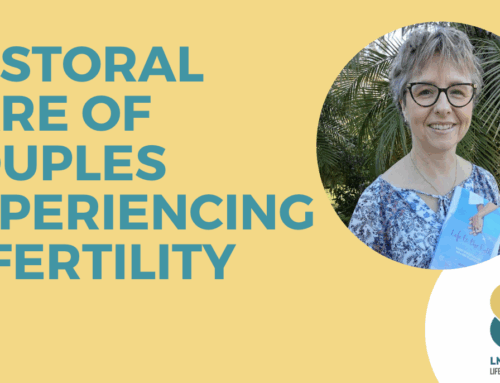Ninety-three percent of Australian youth want to have children later in life.[1] This datum, coupled with the sobering divorce rates and the increasing secularisation of society presents an opportunity for the development of a new sacramental programme for Catholic institutions.
This article will outline the principles by which adolescents can be formed for a nuptial union, most commonly called the sacrament of marriage. Specifically, it will be argued that the principle of subsidiarity should be applied in such a way that does not seek to dominate spaces but gives a priority to time. It will be proposed that the second stage of marriage preparation, Proximate Preparation, should be revisited to assist in developing a new and more appropriate language for adolescent formation.
Subsidiarity & Time
If any reform, or renaissance for that matter, is going to be successful it needs to nurture the development of initiatives at the local level rather than simply pouring directives down the chain of command. The principle of subsidiarity is an essential Catholic teaching that assists in the implementation of new initiatives. One need look no further than successful organisations such as Caritas and Oxfam, who seek to build up local knowledge and skills to achieve sustainable reform.
In a similar way, the renaissance of marriage needs to build up local knowledge and skills by upholding the role of parents as the primary educators of the child. This means parents need to undertake the essential role of accompaniment, which “teaches us to remove our sandals before the sacred ground of the other” (cf. Ex 3:5).[2] To be clear, parents are not being asked to teach their children all the intricacies of sacramental theology, but they can certainly support those that do have the capacity to do so.[3]
An inherent component to the principal of subsidiarity is the need for our own freedom. Adolescents are quick to judge so they need to be given the freedom to form their own consciences. In Amoris Laetitia, Pope Francis states that: “we have been called to form consciences, not to replace them”.[4] One may honestly ask how this can be achieved! In Evangelii Gaudium, Francis argues that time is greater than space. He explains that “giving priority to time means being concerned about initiating processes rather than possessing spaces”.[5] As parents hold the role that gives them the most amount of time with our young people, there is much reason to hope that this formation can be achieved. This is as much about building up the Domestic Church as it is about forming the individual adolescent.
Proximate Preparation
St. John Paul II the Great outlined a framework for marriage preparation in Familiaris Consortio, which is comprised of three sequential stages. As a Church, we have been faithful to his third stage of marriage preparation, Immediate Preparation, but rather haphazard in the implementation of the second stage, Proximate Preparation. Logically, a poor second phase compromises the work of the third stage.
The framework offered in FC does not ask for a reactive response to immediate concerns, but instead requires the proactive implementation of “a catechumenal process”.[6] The Pontifical Council for the Family states that marriage preparation is a response to “the urgent need to evangelise culture – by permeating it to its roots”.[7] This Council also recognises that the stages of marriage preparation overlap. In fact, “they cannot be defined either in relation to the age of the participants, nor in relation to their duration.”[8] Significantly, the Council concludes that “the ways and means must be ‘invented’ for the ongoing formation of adolescents”.[9] Pope Francis’ writings reflect these sentiments as he upholds the need for “a long and demanding apprenticeship”.[10] This training can be faithful to the Catholic Tradition if it takes the form of a catechumenal process, which is based on the RCIA model. Essential components of this process of formation are hearing the kerygma and receiving a mystagogy on marriage.
Kerygma & Friendship
At first, asking a parent, teacher, catechist, or religious to prepare an adolescent for the sacrament of marriage seems like an impossible and perhaps unnecessary task. Questions pertaining to the complexity of this content and the maturity of students may arise, as well as doubts about the desire of any marriage at all. These are genuine concerns, which are reflective of the cultural norm. However, Christians are called to challenge the status quo. It can not be ignored that adolescents are already forming their own consciences about marriage, and the Church has a duty to speak into this formation. There is a dire need for adolescents to see a vision of marriage that is positive, hope-filled, authentic, and sacramental.
One need not be overwhelmed by this task as students of this age regularly walk into classrooms and learn about complex matters. The trick is to make the delivery intelligible and relevant to their lives.
Kerygmatic proclamations for youth come in many different forms. Leading an adolescent towards the sacrament of marriage requires a specific technique, founded in the writings of Aristotle, St. Thomas Aquinas, Bl. John Henry Newman, St. John Paul II, Pope Francis, Maria Montessori, Gerard O’Shea, and Sacred Scripture. The hermeneutic to hook an adolescent on the sacrament of marriage must be something that will allow the young person to relate the theology to their everyday life, yet something that runs throughout conjugal life like voltage through a power line. One possible hermeneutic is friendship.
Talking to adolescents about the role of friendship in relationships often excites them, which can create an opportunity to discuss the Goods and Ends of Marriage.[11] Unity of spouses can be discussed by applying Aristotle’s tiered levels of friendship. Fidelity to Christ can be discussed by referring to the trust between friends. Indissolubility can be discussed by using the contemporary acronym BFF (Best Friends Forever). Finally, Fecundity can be discussed by addressing the use of performance enhancing drugs amongst friends in team sports.
Using these concrete examples can assist in the preparation of adolescents for the next stage of formation, which requires ecclesial involvement. In following the structure of the RCIA, a formal liturgy could be undertaken, or perhaps a Mass offered for their chastity, a scapular, or chastity ring may be gifted as a foreshadowing of the wedding ring in the Rite of Marriage. This would constitute a formal declaration of one’s faith, analogous to the public professional given by a catechumen.
Mystagogy & Friendship
Proceeding a formal entry into the pre-marriage catechumenate, the mystagogy ensues. Mystagogy is a pedagogy that seeks to expound the meanings of the rite in all its mystery, glory, and sanctifying power.
One may ask why such a process is required at all. In response, it is helpful to return to the wisdom of the Church, found in The Catechism: “the sacraments are efficacious signs of grace”.[12] In other words, sacramental programmes are intended to help the faithful read the liturgical signs in order to draw them into a closer union with God. Put simply, mystagogy translates the rite.
Pope Benedict XVI’s framework in Sacramentum Caritatis provides a clear structure for such an approach. Specifically, a mystagogy in marriage should help adolescents interpret the rite of marriage in the light of the events of salvation history, present the meaning of the signs contained in the rite, and bring out the significance of the rite for the Christian life.[13] Importantly, St. John Paul II’s Theology of the Body satisfies the criteria for a mystagogy on the sacrament of marriage. There is still much to be written on these topics and their relationship to friendship but some preliminary work has already been completed.
Conclusion
This article has outlined the principles required to form adolescents for the sacrament of marriage. It was argued that the principle of subsidiarity should be applied in such a way that it gives a priority to time. It should not be forgotten that the marriage preparation framework provided by St. John Paul II in Familiaris Consortio already contains within it a catechumenal process that gives a priority to time. Popes Benedict XVI and John Paul II have provided much valuable material on mystagogy, whereas Pope Francis appears to be more focused on the proclamation of the kerygma. Perhaps now we, as a Church, can offer a pre-marriage catechumenate that offers a genuine path of formation for adolescents.
Pilot Programme
This research has been implemented in a pilot programme that can be considered volume two of Dr. Gerard O’Shea’s earlier work, As I Have Loved You: Years of Innocence and Puberty (2011). O’Shea’s work is a primary school programme for Christian education in human sexuality, whereas Ashley’s pilot adopts the same principles and applies them to adolescence. Below is an endorsement for the pilot programme from Bishop Michael Kennedy, Bishop Delegate to the Australian Catholic Marriage and Family Council.
“As a Church, we have provided marriage preparation predominantly to the engaged but now it is time to expand this vision to include youth. This pilot programme presents the Church’s teachings on the sacrament of marriage in a new and more appropriate language for adolescents and young adults. It follows a catechetical framework and will be useful for parents, parishes, and Catholic high schools. I am very happy to endorse this pilot programme and I look forward to seeing its fruits in the future.”
Clicking on this link will take you directly to the playlist on YouTube.
[1] Mitchell, Anne et al., 5th National Survey of Australian Secondary Students and Sexual Health 2013 (La Trobe University, Melbourne, Australia: Australian Research Centre in Sex, Health and Society, 2013), 48.
[2] Francis, Pope, Evangelii Gaudium (Vatican City: Libreria Editrice Vaticana, 2013), § 169.
[3] Educators can assist in formation of the child, “but they can only take the place of parents for serious reasons of physical or moral incapacity”. Pontifical Council For The Family, The Truth and Meaning of Human Sexuality: Guidelines for Education within the Family (Vatican City: Libreria Editrice Vaticana, 1995), § 23.
[4] Francis, Pope, Amoris Laetitia (Vatican City: Libreria Editrice Vaticana, 2016), § 37.
[5] Francis, Pope, Evangelii Gaudium, § 223.
[6] John Paul II, Pope, Familiaris Consortio (Vatican City: Libreria Editrice Vaticana, 1981), § 65-69.
[7] Pontifical Council For The Family, Preparation for the Sacrament of Marriage (Vatican City: Libreria Editrice Vaticana, 1996), § 20.
[8] Pontifical Council For The Family, Preparation for Marriage, § 21.
[9] Pontifical Council For The Family, Preparation for Marriage, § 31.
[10] Francis, Pope, Amoris Laetitia, § 136.
[11] Catholic Church, Catechism of the Catholic Church (Strathfield: St Pauls Publications, 2004), § 1601-66.
[12] Catholic Church, Catechism, § 1131.
[13] Benedict XVI, Pope, Sacramentum Caritatis (Vatican City: Libreria Editrice Vaticana, 2007), § 64.


